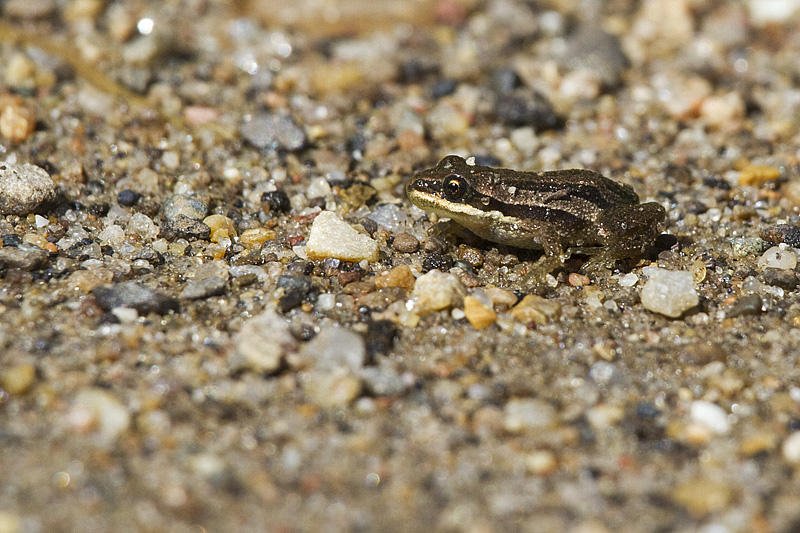Boreal Chorus Frog (Pseudacris maculata)
The boreal chorus frog is a member of the family Hylidae (“HYE-lih-day”), also known as the tree frog family. The boreal chorus frog is the only tree frog native to Alberta. It is a tiny frog, growing no larger than 4 cm long, with tiny toe pads. Despite the fact that this species is a member of the tree frogs, it happily prefers to spend its time near bodies of water. Such bodies of water can even include tiny puddles, flooded fields or roadside ditches, as long as the water is more than 10 cm deep!
Boreal chorus frog by Gerald Romanchuk
Why they Matter to Us
Like most other frogs and toads, the boreal chorus frog is an important member of any ecosystem. They help control insect populations such as mosquitoes, flies, grasshoppers, and many other small insects. These frogs are also an important source of food for predatory birds, snakes, and small mammals. The tadpoles are eaten by fish and other invertebrates.
They are also an important indicator species, and a sudden decline in their population likely suggests negative change in the habitat suitability for all animals within the area.
How You Can Help
Support protected areas in the Edmonton region (such as EALT). You can donate or volunteer your time to help with conservation efforts.
Avoid using pesticides or other chemicals that may contaminate local water sources. All amphibians are extremely sensitive to environmental changes!
Avoid disturbing the frogs or their habitat. Do not pick up or move tadpole eggs. Picking up frogs may transfer chemicals or diseases onto their delicate skin, which may harm them.
How to Identify
Identify by Sight
To identify the boreal chorus frog, look for these distinguishing features:
These are small frogs no bigger than 4 cm so keep a keen eye open!
The colours of the chorus frog vary from grey to green, but all will have black stripes running horizontally down the body. Look for a distinct horizontal black eye band that covers the eye.
Their limbs are long in comparison to the body.
Their skin is rather smooth with no bumps, unlike toads.
Look for round toe pads on the tips of their toes and fingers.
Identify by Sound
The call of boreal chorus frog sounds much like that of someone running a finger along the edge of a comb. Listen here! They call most commonly during the early evening, but can also be heard during the day. The male frogs call most actively during the mid-April to early June breeding season.
Where to Find
Generally, boreal chorus frogs can be found in open clearings of forested areas with a nearby source of water, such as a lake with trees growing along the banks. They can also be found in flooded fields, wetlands, marshes, and anywhere where there is a source of standing water deeper than 10 cm with no large fish predators.
Fun Facts
The various different colour patterns on frogs and toads are called “morphs.”
So-called “satellite males” allow other males to call in females for breeding and then rush in to breed with the females before the original male can.
The word amphibious means “living a double life” referring to the aquatic life of the tadpole and more land based life of the adult frog.


